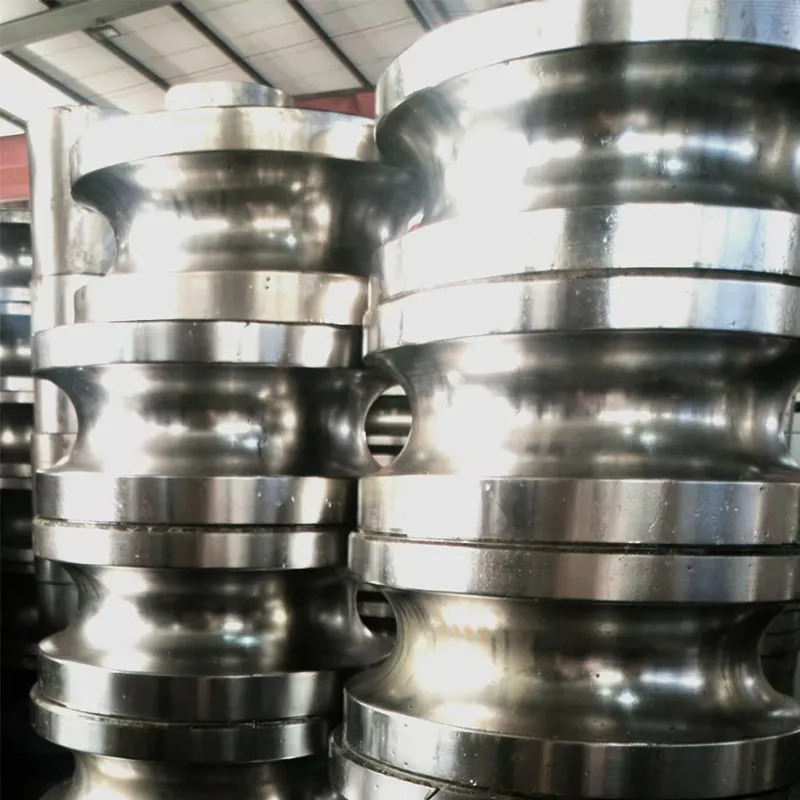shaft straightening press
Shaft Straightening Press An Essential Tool in Mechanical Engineering
In the realm of mechanical engineering, precision and reliability are paramount. Among the various machines that aid in achieving these objectives, the shaft straightening press stands out as a critical component. This specialized equipment is designed to rectify the deformations and misalignments that can occur in shafts during manufacturing or operational use.
A shaft is an essential part of many mechanical systems, acting as a rotating element that transmits power and motion. Any deviation from the straight form can lead to misalignment, increased wear, and even catastrophic failures. Therefore, ensuring the integrity of a shaft is crucial for the overall performance and longevity of machinery.
Understanding the Functionality of Shaft Straightening Presses
The shaft straightening press operates on a simple yet effective principle. When a shaft becomes bent or distorted, it requires a controlled application of force to restore its straightness. The straightening press applies uniform pressure to specific points along the length of the shaft, aligning it back to its original specifications.
The process begins with the assessment of the shaft to identify the extent and location of the deformation. This assessment can involve measurements taken with precision tools, ensuring that any adjustments made are based on accurate data. Once the problematic areas are located, the shaft is placed in the straightening press, which is equipped with adjustable clamps and hydraulic systems to apply the necessary force.
One of the key advantages of using a shaft straightening press is its ability to correct both minor and significant bends without compromising the material's integrity. With the right techniques and equipment settings, engineers can achieve remarkable results, restoring shafts to within tolerances that are often less than a thousandth of an inch.
The Importance of Precision in Operation
shaft straightening press

The operation of a shaft straightening press requires considerable expertise. Operators must be well-trained to determine the correct amount of force needed, as excessive pressure can lead to further deformation or even fracture of the shaft materials. Therefore, calibration of the equipment, along with a deep understanding of material properties, is essential to mitigate risks.
Moreover, modern shaft straightening presses often come with computerized systems that enhance precision and repeatability. These advancements allow for real-time monitoring and adjustments, making the straightening process more efficient and reliable. Advanced models may also feature integrated measuring systems that provide instant feedback on the straightness achieved, enabling operators to make informed decisions during the process.
Applications in Various Industries
Shaft straightening presses find applications across various industries, including automotive, aerospace, and manufacturing. In the automotive sector, for instance, they are used for correcting crankshafts, camshafts, and axles, which are vital for engine performance and vehicle safety. In aerospace, where tolerances are even tighter, straightening presses ensure that components like turbine shafts are precisely aligned to handle the stresses of flight.
Manufacturers also rely on shaft straightening presses for maintenance and repair operations. By addressing shaft deformities proactively, companies can prevent potential failures and extend the life of their machinery, ultimately leading to cost savings and increased productivity.
Conclusion
In conclusion, the shaft straightening press is an invaluable tool in mechanical engineering that enhances the reliability and longevity of critical components. As industries continue to push the boundaries of technology and precision, the role of such specialized equipment will remain pivotal. The importance of maintaining straightness in shafts cannot be overstated, as it directly impacts machinery performance, safety, and operational efficiency. Investing in quality shaft straightening solutions is not just a matter of maintenance; it is integral to ensuring the success of mechanical operations in today’s demanding industrial landscape.
-
High Frequency Straight Seam Welded Pipe Production Line-BzZhou Xinghua Machinery Equipment Manufacturing Co., LTD.|Precision Welding, High EfficiencyNewsJul.30,2025
-
High Frequency Straight Seam Welded Pipe Production Line|BzZhou Xinghua|Precision Welding&EfficiencyNewsJul.30,2025
-
High Frequency Straight Seam Welded Pipe Production Line - BzZhou Xinghua|Precision Engineering&EfficiencyNewsJul.30,2025
-
High-Frequency Straight Seam Welded Pipe Production Line-BzZhou Xinghua Machinery Equipment Manufacturing Co., LTD.NewsJul.30,2025
-
High-Frequency Straight Seam Welded Pipe Production Line-BzZhou Xinghua Machinery Equipment Manufacturing Co., LTD.|Precision Manufacturing, High EfficiencyNewsJul.30,2025
-
High Frequency Straight Seam Welded Pipe Production Line-BzZhou Xinghua Machinery Equipment Manufacturing Co., LTD.|Precision Steel Pipe Manufacturing&Industrial EfficiencyNewsJul.29,2025


